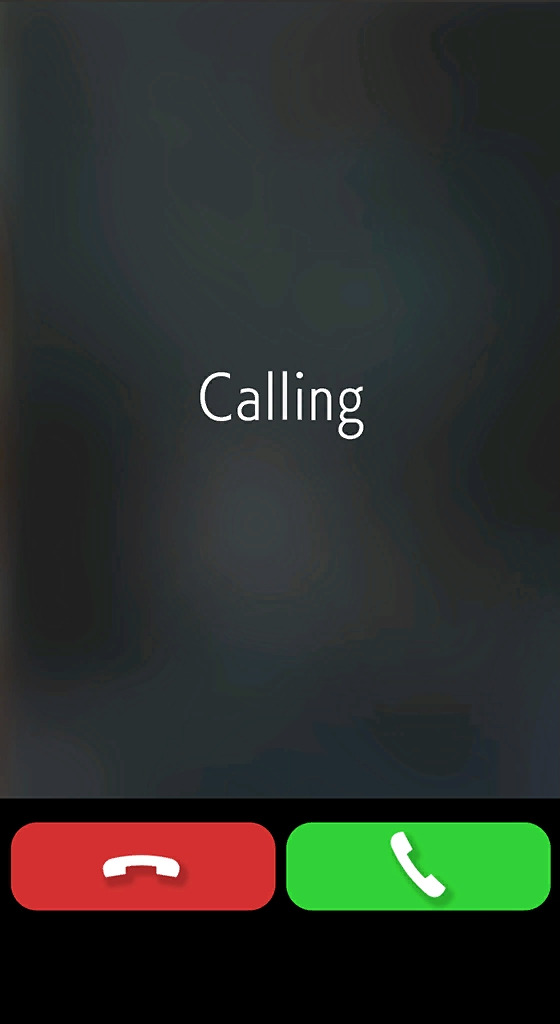#smartphones & basic mobiles
Explore tagged Tumblr posts
Text
2003: Motorola startac (hand me down)
2007: Motorola razer (new)
2009ish: Some kind of ericsson brick I borrowed from a friend (hand me down)
2011ish: Blackberry knockoff Nokia that could tweet but not do much else with the internet (new, bought cheap in the UK so I could have a phone while visiting family, eventually gave to my mom for same reason)
Am I forgetting one? I don’t think so
iPhone iPhone 6S (new)
iPhone SE (new)
iPhone SE 2020 (new)
I am not on a plan that gives free or cheap upgrades so I have to buy them outright. I use my phones until they stop working/become unfixable.
And lemme know your age (if you feel comfortable!), and when you got your first phone in the tags!
If these options are scuffed I'm sorry, I genuinely have no clue how many phones people are "supposed" to have had (hence the poll)
#fwiw I’m 32#I got my my first cell (the startac) when I started taking the bus by myself in seventh grade and got lost the first day lol#it was basically just in case of emergencies#I didn’t really text or call socially much#I got an iPod touch in college around 19 and that was my main mobile social device#but I didn’t have my first proper smartphone til I was in my 20s
23K notes
·
View notes
Note
Why don't zoomers use emulators or torrent things anymore? A good amount of zoomers could probably figure it out with time but people either just buy digital games or use pirate streaming sites.
I think there's a certain technical knowledge gap between people whose first computer was a Windows XP machine and people whose first computer was an iPad. On a mobile device like that, even the filesystem is abstracted away from you, so if that's all you've used your whole life, you may not know what a "folder" or a "file" is. If you don't know what those are, how could you be expected to understand something like torrenting? Then add the layer of a VPN, which is basically a necessity when torrenting lest you get a love letter from your ISP, and I'd say it's all but impenetrable for our strawman.
Idk man. Torrenting isn't hard, but there's a barrier to entry that a lot of people who grew up using smartphones aren't equipped to handle. There are plenty of millenials who don't know how to torrent either, and plenty of zoomers who do. It's just a technological generation gap.
6K notes
·
View notes
Text
Japanese website Forest Page is shutting down ~today, a tragic loss of "Heisei otaku memories", as so many are calling it. Launched in 2003, Forest Page was a "Geocities for mobile", a site that hosted user-created websites and gave them tools to allow non-coders to make them. In practice, it became one of the premiere places for fanfiction in Japan, with the stories hosted on author-created sites.
It wasn't quite the Fanfic.net of Japan, as for one the Japanese fandom just never centralized quite the way the 2000's western one did, instead being spread out over a half dozen or so sites. But additionally, it wasn't initially popular for fanfic so much as cell phone fanfiction, because in 2000's Japan the "cell phone novel" was a specific thing. These websites were being made for flip phones, not smartphones, and not only would people read them on those phones, they would often write them. None of that was very conducive to the creation and consumption of a "traditional" novel; so starting in the 2000's Japanese writers started making stories fit for the medium, namely:
Very short
A huge focus on dialogue and inner thoughts, with no/minimal description or scene detail
Using a limited POV of a specific character
Often employing the medium-as-message, like using emojis, structuring the story as IM's or emails, etc.
Also they all had huge gaps between lines, I'm not really sure what that is about:

Probably for readability on the phone given the small screen size? But it was absolutely part of the genre. A few of these novels actually made it big, got movie adaptations, people wrote articles about the "cultural phenomenon", it was the 2000's so Hiroki Azuma had a take on it of course, and so on. It slotted neatly into the vibe of the time of technology changing culture, paralleling discourse around otaku in the same era.
In fanfic those trends met up, and anyone familiar with fanfiction probably read that list of traits of the cellphone novel and thought "oh, this is perfect for fanfiction". Skipping out on description? I don't need it, I know what they look like already. Focus on conversation and POV? Perfect for shipping fics. Short lengths? Yeah, we are shortcutting to the good stuff, that is the point. Mirroring trends in the west, Forest Page's userbase was ~95% female, and the most common content on the site was romantic or edgy-dramatic stories in the franchises you'd expect. The closure page linked above actually summarizes the site's history by year, and lists the biggest fandoms:

Which is exactly what I would expect from a female otaku fanfiction website. Congrats to Pirates of the Caribbean for making it though, freeaboo's represent.
I do think the fact that the site was a website hoster as opposed to a fic hoster did align with the way the Japanese fandom was more "creator focused" and embraced the media mix more. There were "fic circles" a la doujin circles who made their own pages, people would make fanart, fan video games, and so own to host alongside it, and all of it was centralized to the creator; it made following them-as-a-person just a little bit easier. Most websites were simple text, but others did have the full Geocities experience:

Something that was somewhat common were basic visual novel concepts where the reader could make choices, or even insert their own name so they would be the "MC" of the story:

(Dream novels are in fact their own thing in Japan) My understanding is the site was quite popular through the 2000's and into the 2010's, though over time the "cellphone novel" as a concept fizzled out. People got smartphones, more people got PCs, and the constraints didn't make sense anymore - you can read ebooks and normal websites on your phone now after all. You can probably draw a line between these kind of stories and the webfiction/light novel boom of the late 2000's/2010's, something that was equally born on the internet, that streamlines the novel to "shortcut to the good stuff" but without the need to fit on a flip phone's screen. Though I will admit my own understanding of their histories shows them more as two sides of the same "youth demand for new literature" coin.
In 2017 Forest Page launched Forest Page Plus, a new service fully optimized for the smartphone era; but it did not transfer over all the old content, starting the clock ticking on the original Forest Page. My understanding is that in June they announced Forest Page was officially closing down; and from what I have gathered from reminiscing writers on twitter, they did not provide any easy, one-touch way to save any of the content, so people are archiving Wayback Machine links or sharing tips on how screenshot-save stories (I think the rub is they gave people a way to transfer content to FP+, but most don't want to do that, as places like Twitter & Pixiv are the content kings of this era).
As of tomorrow I would bet the large majority of the content will be gone; quite sad given both the quantity of stories there and how many got sometimes millions of readers. I am sure most of the biggest stories are archived at least, but particularly the early stuff was a very ephemeral genre, one that doesn't make sense to revisit once you aren't a 16 year old teen writing and reading fics on a flip phone in between classes. Which means another legion of the ghosts of the Wired is being born today. May we pour one out for a fellow online community that lived and died!
#forest page#otaku history#history of the internet#If some group did do a big archiving of the site that would be great to learn - I don't claim to be an expert on the site or anything
122 notes
·
View notes
Note
Yello! I want something fluffy but funny so I thought I’d request an aziraphale x crowley x reader where the reader is tech savvy, and by tech savvy I mean just basic knowledge of gadgets and such, but to crowley and aziraphale, tech savvy. Reader introduces them to a lot of gadgets and they’re both so amazed.
Bonus points for nina and maggie confused in the background because it’s literally just basic things but crowley and aziraphale act like it’s fucking magic (also ik crowley has a smartphone, but still!)

notes: I love this request so much. I really enjoyed writing it! (And don’t worry just because Crowley has a smartphone doesn’t mean he actually knows how to use it, take a look at almost any person above the age of 60)
pairing: aziraphale x gn!reader x crowley
rating: G

“Darling, the printer isn’t working.”
“Have you tried pressing ‘Control + P’, Aziraphale?”
“Yes. It’s not doing anything, devilish thing.”
You sigh, put your book down, and head over to your angel’s desk. He’s trying to print out a screenshot he’s taken of a picture you sent him the other day. It’s a cat meme. He’s rather taken with them, and likes to have copies to look at across the bookshop. You have explained he can just save the image itself but he doesn’t quite seem to understand that.
“Ah you see Aziraphale, the problem is that you haven’t actually turned it on.”
“Oh!” he exclaims as you reach over to the power switch. The printer lights up and begins to spit out a dozen copies of the image Aziraphale has now lined up in its queue. As you try to force it to stop, Crowley saunters up behind you.
“Can you help me get these to connect? They’re not—”
“Yes, one second,” you say, thumping the machine as it makes a sharp noise, and handing a pile of print-outs to Aziraphale. “Headphones again?”
Crowley nods, a little petulantly. You fish out the buds and put them in your ears, waiting until you see they’ve connected on the Bluetooth.
“Here,” you sigh. You wonder if any of this is actually worth it. Yes, it’s nice for the three of you to have a group chat, but having to constantly remind them that most of these devices have to be connected to electricity is grating on you a little.
“Oh, I’ve just got a message from Nina on my mobile telephone!” Aziraphale announces. You see him pause over the passcode screen and you brace for him to ask you what it is, again, but he remembers at the last second. “She asks if you can go over and help with the tills, she says they’re… well, I’m not going to repeat what she’s written here but in nicer terms they seem to have broken.”
“Aziraphale please stop telling her that I’m some sort of tech genius. I’m not. I just know how to press buttons correctly.”
“Come on, believe in yourself,” yells Crowley. You roll your eyes and take out one of his headphones.
“Crowley, I can hear you over your music! You don’t need to shout!”
He sniffs. “It’s a podcast actually.”
“I can tell her that but she might be disappointed,” Aziraphale says, looking at you with Those Eyes. He’ll win, he’ll always win, because you can’t say no to him. You groan.
“Alright. Tell her I’m on my way - but not to get her hopes up!”
Aziraphale beams at you. As you leave the shop, the printer tells him it’s run out of ink, so he goes about ordering an entirely new one off the internet.
-
taglist: @angiestopit @dazed-soul @smile-eywa @staygoldsquatchling02 @underratedboogeyman @specter-soltare @candlewitch-cryptic @cool-ontherun-world @emilynissangtr @willbedecided @cool-iguana @bdffkierenwalker @ilyatan @civil-groupie @foolishprincipalitee
#aziraphale x reader#crowley x reader x aziraphale#crowley x reader#good omens x reader#ineffable husbands x reader#request
318 notes
·
View notes
Note
hi!! im working on a story that takes place at a 2012 public high school - the issue with that is that i was not in high school in 2012 lmao. do you have any tips on how to keep it feeling realistic?
Well, neither was I!! But here are some tips:
Define Your General Setting
Sure, high school has a different feel compared to an average town/city setting. However, it is still a part of the bigger community, and will be impacted by external factors.
What part of the world are your writing about? What's the general economy like? What's the most common occupation of the kid's parents? What's the prevailing fashion/art/music style?
Your teens will be impacted by the popular culture and trends of the time, so start by outlining the general setting!
Fashion
I think this is where schools have changed the most. There are going to be some overlaps between early 2010s and late 2000s, so if you think in the direction of Y2K fashion, it should fit.
On a general note, I think 2010s fashion was vibrant, with lots of colors and flashy items...
Side fringes and backcombed/straightened hair were still very popular
most girls had huge messy sock buns on top of their heads
boys had the Justin Bieber cut.
Jack Wills and Hollister were pretty popular, and a lot of girls had a Paul's Boutique jacket and a Jane Norman bag for their PE kit (or one of the Hollister bags with a topless guy on).
Converse were universally cool, and there were lots of imitation brands.
Open flannel shirt over a t-shirt was a pretty popular outfit.
Skinny jeans and band t-shirts
bright chunky rubber band bracelets.
Vans were cool among the alternative kids.
Getting different colours on your braces was cool.
Most of the boys had at least one of those t-shirts with the buttons and the mismatched cuffs.
School-uniform-wise, short ties with big fat knots were cool, and hard kids would pluck a stripe or two out of their tie.
Tucking in shirts was initially not cool, then it became cool to tuck at the front but not the back.
Lots of boys wore black trainers, and lots of girls wore those ballet pumps.
Girls doing their lips with their foundation, with a thick ring of black eyeliner and spidery clumpy mascara - and having a visible orange line where your foundation met your neck was common.
Multiple ear piercings were popular with the alternative crowd
Belly button piercings were big for girls
Just search up some pictures on Google, you should get plenty of "Early 2010s teen fashion starter pack"
Social Media
Smartphones were already popular, and with the introduction of Snapchat(2011) and Instagram(2010), the social media hype was just starting to boom
Facebook and Twitter were popular - basically everyone was on it
TikTok(2016) and Discord(2015) didn't exist yet
Pictochat
Phones were allowed in the classroom, but phones/laptops weren't an important part of school work like it is now.
Digital Devices
Phones-wise, most people had pretty basic dumbphones (although they were just called mobiles back then), and not everyone carried them all the time
Blackberry (BBM), Nokia, LG Cholate, iPhone if you're rich enough
Most kids were on PAYG phones, so you'd run out of credit sometimes (i.e. no more calls or texts) and have to go to a physical shop to top up. Nobody really had data, and there was always a moment of panic if you accidentally opened the web browser on your phone because it was so expensive. Wifi became a thing around 2012.
Nintendo DSes: Mario Kart, Animal Crossing, Nintendogs
iPods or another MP3 Player
Slag
Slang-wise, Urban Dictionary is a good resource.
Fleek, peng and YOLO were popular with some crowds. Leetspeak was a thing online, especially in nerdy communities. Emoji were starting to take off
rawr" (or "rawr means I love you in dinosaur") and "xD" as a laughing face
Music
One Direction, Jedward, Katy Perry, Carly Rae Jepson, Justin Bieber, JLS, Little Mix, Beyonce, Paramour, My Chemical Romance, Bring Me The Horizon, Black Veil Brides, Ke$ha, Eminem, The Killers, OMI, Gotye, Bruno Mars, Macklemore, Skrillex, deadmau5, blink-182, Green Day, Taylor Swift, Lady Gaga, Nicki Minaj, Rihanna, Lana Del Rey.
Fandom Stuff
Twilight was huge, then Hunger Games.
Harry Potter was everywhere all the time, people would go to midnight releases for the books and movies.
High School Musical was popular, then that crowd migrated to Glee and Mean Girls.
The Olympics were in London in 2012
Other Stuff
Reese's peanut butter cups, Marshmallow Fluff, Nerds, etc.
Veganism wasn't well-known, but still there were a few
Lots of casual homophbia, kids jsut genuinely not knowing rather than truly hateful towards it
Here are some movie suggestions, that shows school like in early-mid 2010s quite well:
Easy A
The Duff
LOL
For YA Novels - Be Timeless
Before you start doing any of the things above, remember this if you're writing a YA novel: The key of this genre is to feel somewhat timless, taking readers back to their high school years no matter when and where they've gone through it.
High school is the phase where many people feel awkward, unsure of themselves, feeling special in their own head but knowing that they're not really.
And it's not like the problems just disappear when we hit adult life. A major reason why YA novels are so popular is that they address themes that are repeatedly felt by the general human being, often in a such a direct, straightforward way that provides vicarious satisfaction.
#writers#writing#writers and poets#creative writing#writers on tumblr#helping writers#let's write#writeblr#resources for writers#poets and writers#creative writers#writerscommunity#writing prompt#writing problems#writing process#writing progress#writing practice#writers of tumblr#writers block#writers community#writers life#writer things#write#writer#writer on tumblr#writer stuff#writer problems#writblr#writer community
89 notes
·
View notes
Text
ok i've seen some posts about the tumblr alternative cohost but none that were actually helpful so!
(disclaimer: i am very new to this website. users who have been there longer can and should chime in with additions and/or corrections)
Cohost Introduction Post

What is cohost?
Cohost is a fledgling website that is essentially a tumblr clone, but with its own culture and site-specific features. It is also very much a work in progress. You are encouraged to talk in the cohost forum to suggest changes for devs, report bugs, and upvote other people's suggestions. This website WILL grow and change over time. And as such, I do not know if/when the information I share here will be outdated. Edit: To answer an ask I received, anyone can join cohost without an invite. It used to be invite-only. It is not this way anymore.
Is "adult content" allowed there?
Yes. Cohost is not on the app store, meaning that it is not subject to Apple's specifications. You can post illustrations, writing, and photographs (cohost does not support any video formats at this time, just gifs). Cohost has an elaborate filtering and trigger warning system (moreso than tumblr), and you can disable adult content for your entire account or for individual tags. I actually don't engage with the adult content at all on there. Visual CSEM (both real and fictional) is specifically forbidden (although frankly I think the guidelines could be stricter wrt written content. Still, does seem to handle this better than AO3 does, going as far to say that written content about real minors is forbidden.)
How are minors protected?
The minimum age to join cohost is 16, and requires proof of parental permission to join. Users who are under 18 are automatically age-gated and cannot view adult content.
If cohost isn't on the app store, how is it used?
You can, of course, use cohost on a computer, but it is designed with mobile in mind. Opening the website on any IOS browser, clicking "share", and then "add to home screen" will install an app for you to use. The same can be done on an android. There is a guide here.
How does cohost work?
First, you create an account. Then you wait for approximately two days (read: weekdays) for the account to be activated. This is done to prevent spam bots. In the meantime, edit your profile. List some interests, your pronouns, your other social media links. Give yourself an icon. Note: icon and banner file sizes are small. You may need to shrink and compress images.
After the two days are up, make your first post! Write a basic introduction (with what you feel comfortable you feel sharing) and list some interests you like, maybe some hobbies, media, etc. And then tag this post with "#welcome to cohost". This will let existing members know that someone new has joined, and they may initiate conversation and/or follow you.
Next, go to the search and type in "The Cohost Global Feed" and click on the tag. Bookmark this tag. This is essentially one giant community space where you can find random users. (There is currently some discourse on the website as to whether this tag existing is a "bad thing" or not because "cohost isn't supposed to have a global tag". Just ignore that lol). Next, go back to search and type in things you like. TV shows, maybe. Video games. Music. Anything. See if people have posted in the tags. Follow them. Comment on their stuff. Click "like" to bookmark the post if you want to.
Most crucially, make sure that you bookmark the actual tag so you can look in that tag again later without having to manually type it each and every time. Also, you get a feed called "bookmarked tags" which allows you to scroll through all of them at once, which replaces the "for you" feature other websites have.
You can "share" a post (called "rebug" in user slang) which serves the same purpose as a reblog on tumblr. In a rebug, you can add your own tags or comment in the body of the post. Cohost users do not talk in tags as much as tumblr users - they tend to prefer to speak in the body of a rebug, or in the comment section (replies). At this time, you cannot view all reblogs. But you can view all comments in the comment section. Any post that is rebugged will preserve the tags of the OP, with any additional tags added being attributed to you. Rebugs are named after the website mascot Eggbug, a purple bee-like insect.
Posts are called "chosts" - and shitposting is called "shitchosting." Two examples of global shitposting tags are "#css crimes" - which is when a person does goofy things with the HTML/CSS editor to make colorful text, fake chat windows, and such - and "#shitchosting" which is a general shitposting tag. I've also seen people use tags like "#random".
If a post makes you laugh, check out the OP's profile. See if they post frequently, and if you have any common interests. If you realize you want to block or mute someone instead, you can.
You can send asks just like on tumblr, but your inbox must be manually opened first. So remember to do that.
How do I look at my own blog?
This is one of my gripes about the UI. You would think, intuitively, you would click here (at the top of the screen). But you would be wrong!

It is ACTUALLY under the sidebar menu, called "Profile." And I'm not the only one to to complain about this. (To get back to your dashboard, by the way, you click on the cohost logo.)

Are there sideblogs?
Yes! Each sidepage (sideblog) has its OWN set of likes AND followed pages (blogs). This allows you to easily switch between multiple sets of dashboards. A lot of users use this to have a SFW dashboard and an adult content dashboard. But it works like tumblr, too. You can have a side page/dashboard for whatever you'd like. Maybe one of your pages is for programming. Maybe another is for photography. You switch between your pages by clicking the arrow next to your icon/username at the top of the screen. ("Ohhhhh.... THAT'S what that's for.")
What's the userbase on there like?
Mostly programmers. Trans people. Furry artists. Plural systems. Furry trans plural programmers. Certainly a lot of shitposters. The website is trans-run and, as such, has zero tolerance for TERFs. Everyone seems pretty friendly from what I can tell. And there's very much a culture of "follow someone randomly based on their vibes" that doesn't happen as much on tumblr. Tumblr is more like "I really like this TV show, I'm going to follow 40 blogs about just this interest." Because the cohost community is so much smaller, there is a lot less content overall, especially fandom content. You can't follow 40 fandom pages because your fandom tag has a total of 3 posts, all made by one person approximately a year ago (well. for me anyway).
Cohost, then, actually has much more in common with real-life socialization. You seek out people with interests that may be very different from your own, and to find a common interest is very exciting! Unlike tumblr, you are encouraged to tag as much as possible. This allows your posts to be seen, to find common interests. And, of course, don't forget to look in "#Welcome To Cohost" too! You may find some new friends there.
What file formats can I post in?
Currently, I am aware of basic image formats working (like jpeg, png) animated gifs, and mp3s. You currently cannot upload videos to cohost. I believe the reason is not related to server costs, but rather as a way to curb the uploading of copyrighted content.
How does cohost make money?
There are no ads, and yet, as far as I am aware, cohost is operating comfortably. There is, however, an entirely optional "cohost plus" that is $5 USD a month. Currently, there are a few perks, but not enough to convince me.
What if I think something about cohost should change?
Cohost has a forum where users can submit ideas for features and other users can discuss/upvote those ideas.
Here is a list of posts made for newcomers to read:
120 notes
·
View notes
Text
Oh hey, look at that! Nokia still sells phones (including modern versions of the early flagship phones I love so much)! They've also expanded to smartphones and tablets over the years, and all the prices I'm seeing are insanely affordable compared to most other mobile tech brands.
So it turns out that when my current phone finally beeps it's last text tone, I really *can* just replace it with a basic old Nokia phone and a tidy lil tablet, and all for fractions of what I paid for the current one!
Now all I need to do is find the desktop computer version of Nokia as a company so I can finally replace my desktop for work.
#does anyone know what desktop computer company sells that could handle both fff14 and 6hrs daily of video conferencing?#i don't need it to have a high storage capacity#i plan to get an external harddrive for all my work files to better secure them#but i DO want to be able to play an mmorpg with the kind of graphics card demand that would have made early ibm engineers cry
27 notes
·
View notes
Text
whenever neocities users justify their websites being completely unusable on mobile with “my vision for the site only works on desktop” my only thought is why does the vision for your site not include people who don't own computers or can only use smartphones for accessibility reasons or what-have-you. it’s completely fine to acknowledge you’re still learning and just don’t know how to code responsive layouts, and it’s fine to say well i don’t really care who looks at my site i’m just doing my own thing. but when you try to justify exclusion of a specific audience because your Vision Doesn’t Include Them it’s so pretentious and weird to me
i know there’s some things that genuinely just really don’t work without the controls or wide space of a desktop monitor, but i’m talking like. basic homepages that are perfectly capable of having their information adapted to mobile. things where the only barrier between the website and a smartphone using audience is the knowledge and effort to make it work. why is it so not worth it to adapt that for that audience. computer users are not morally better or more worth sharing things with than people who use smartphones and that’s some crazy elitism to think so
i miss the old internet as much as the next guy but we don’t have to bring back lack of accessibility practices and lack of responsiveness too…
26 notes
·
View notes
Text
Mobile phone screens from Resident Evil Village
One folder in the RE8 game files is mostly just images from smartphone screens. That includes a few you'll never actually see in the game ‒ like this one, which is pretty clearly a shot from the baby monitor we see Ethan activate after he puts Rose down to sleep.

Presumably, you were supposed to be able to view this image on his laptop or phone, but this feature never made it into the final game.
Other assets were technically used, but we never do get a good look at them. For example, remember when Ethan answers his phone in the flashback sequence while he's unconscious? We only see the phone screen display the words 'Calling', and then later, when he gets another call, 'Work'. But between the two, you can almost see a name pop up as he answers his phone.



Turns out it was Dr Castelli. Which (in a neat detail) does look to match the signature on Rose's medical report (you can find it in a drawer in Ethan's home, and I've already talked its significance to death), which plainly starts with a 'C'. Apparently the doctor's first name starts with a 'V'.

In even more random detail, remember when Ethan picks up and answers the broken cellphone after waking up by the overturned truck in the snow?

Turns out the number on it was 'HQ160805'!

I'm sure your lives are all very much enriched by knowing that.
Then there are the photos Chris shows off on his phone during the game ‒ like the four of Miranda at the ceremony site that he shows to Ethan.

But then we get to the other photos he flicks through later, and... look, seeing these out of context just makes them so much weirder.




So, after shooting Mia/Miranda, someone on Chris' team stopped to snap a picture. While they were dragging Ethan's body out of the house by his feet, someone again took a photo, and made sure to send it to their boss.
It makes rather more sense to snap a photo of the scene at the overturned truck ‒ it's basically a crime scene, and for once, that's not even a body the team created themselves ‒ but we're starting to build a pattern here where snapping pics of every dead-or-unconscious body they come across is a key part of Dog-Dog-Squad protocol. Does Chris not believe people are properly incapacitated until he's seen photographic evidence? Or is this just a personal collection? Like, "Bad news, boss, Ethan's dead! Good news, I got you this great photo!"
Fuck, but they must've been busy when they got to the village ‒ there were bodies everywhere down there. I mean, is that why they got so little done? They were all too busy running around and engaging Photo Mode on every body they found?

Careful, team, some of those bodies are known to get back up again!
Oh who am I kidding, they've been working with Chris for years, they totally know that already.
126 notes
·
View notes
Text




🇰🇷 Transport yourself back in time with the Samsung SPH-WP10 watch phone! Released in 1999, this groundbreaking device marked Samsung's foray into the realm of wearable tech, combining the functionalities of a mobile phone with the convenience of a wristwatch.
⌚️ The SPH-WP10 was ahead of its time, boasting impressive features such as a built-in antenna, phone dialer, and LCD screen. Despite its compact size, it packed a punch, allowing users to make calls and send text messages on the go.
⚙️ Equipped with innovative technology, the SPH-WP10 supported basic phone functions and offered a sleek design with a digital display. Its futuristic appeal was enhanced by features like a built-in speakerphone and vibrating alerts.
💾 Despite its limited memory and basic functionalities compared to modern smartphones, the SPH-WP10 paved the way for future advancements in wearable technology, showcasing Samsung's commitment to innovation and user convenience.
🌟 The SPH-WP10 may have been a relic of the past, but its impact on the evolution of mobile communication is undeniable, earning its place in the annals of tech history.
#timetrek#brands#clock#watch#time#companies#history#company#SPH-WP10#samsung#Samsung Electronics#south korea#made in south corea#watches#digital watch#mobile phones#gadgets#old gadgets#old technology#old tech#devices#y2k aesthetic#y2k#innovation#innovative#electronic#tech geek#wearable tech#wristwatch#wrist watch
31 notes
·
View notes
Text
I'm Unpeeling Myself from Big Tech!
"Unpeeling" being any act you take that limits the amount of data a large tech corporation can gather from you, decreases your reliance on products of those corporations, or increases autonomy over your technology. I'm ripping the term from a line in this review by Joanna Nelius, where she writes, "People are looking for ways to peel their eyes from their smartphones like a layer of Elmer’s glue from their hand — to remove a part of themselves that really isn’t a part of themselves." It's different than "unplugging" because the goal isn't to go off the grid, or even to limit one's technology usage. The goal, instead, is to extract from the invasive, addictive, destructive capitalist vision a set of tools that are useful to YOU.
It started when I realized I don't need a smartphone. I've deleted most social media from my phone, and the stuff I still have I prefer to check on my laptop. Not all "dumb phones" (I hate this term) offer the same features, though, so I began to think on a granular level about what I need from a cell phone. Eg, not all "dumb phones" provide MMS, but my family lives 3k miles away. I wanna still talk in the groupchat.
On the more complex end, I write on my phone. I've been using Google Docs to move seamlessly from scribbled writing drafts on my phone to formatted, finished works on my computer since I was fourteen.
Except, Google Docs is useless now. I've been unable to use it since they lowered the storage capacity. The only other cloud storage writing thingy with similar functionality is Office 365, which sucks.
Could a dumb phone with a basic "notes" feature work? Maybe, but I'd have to re-type everything to get it into a formatted document. Ideally, I'd have like, a mini-laptop just for writing - something I could fit in my pocket or in a small bag, so I could bring it to work without looking like a dick - and then, in addition, a basic phone for calls/texts/GPS stuff. But does a device this specific to my use case even exist?
Yes. Yes it does.

This is a GPD Micro PC. GPD mainly sells handheld gaming machines, though this product is designed for mobile IT professionals. It's probably too chonky for a pocket, but mark my words, I will figure out how to make it work for me.
It's stupid, but this gave me a rush. I've been struggling along, tied to the bloated corpses of three gmail accounts, for years, because I needed Google Docs for my writing workflow. But now I don't. I have the power to actually tailor my tech for my life.
By this point, I was like, alright, I don't need Google Docs anymore, I don't need a smartphone, what else? Do I need Windows? No, probably not, right? I can use Linux Mint on this new guy, especially since he'll mostly be a basic writing machine. LibreOffice is less intrusive and bloated than MS Word - a better experience for free than I'd have from the paid program. If I go all the way and install Linux, I also won't have to deal with ads in my start menu, or pre-installed spyware screenshotting my activities.
In fact, if I back everything up on an external drive, I can delete my old Google Drives and switch my main computer to Linux, too! So, I finally bit the bullet and invested in an external hard drive.
This is the problem with "product ecosystems," by the way. When one part of that ecosystem - Google Docs - fails, the whole thing collapses. All the bloat and corruption you dealt with just stops being worth it, and it's easier to make a radical change to a new system. I witnessed something similar happen with comedy tech youtuber Dankpods earlier this year, except with Apple's ecosystem: he was a lifetime Apple guy - seemingly not in a worship way, but he liked their products, and was certainly in Apple's ecosystem. Then a couple things went sour for him, and now he runs Linux.
I'm doing this for personal and ideological reasons. I'm personally sick of Clippy - I mean, Copilot - peeping in to tell me how to write what I'm writing on Office 365. I abhor the idea of paying Google for a service they offered for free until recently, knowing they can flip the script at any point. And while we're talking ideology, I'm a communist, and even though this is far from a shift everyone can make, I believe that taking any available steps towards shutting Big Tech out of our lives is a net good. If all you can do is delete Instagram, or use a screentime tracker, or switch to Firefox, do it. I'm finally in a position to make this more drastic change, and I'm excited.
Get in the weeds about how you use technology. Do you need everything at your fingertips, all the time? If not, what, specifically, do you need? Is there a way that you, now or in the future, can trim out the parts you dislike? And what can you change now?
17 notes
·
View notes
Note
could you write an article about the history of pokedex and how it came to be what it is now? thank you!
Thank you for the question!
History of the Pokédex... that's quite the topic. There's enough here to write a book. In fact, Professor Hyacinth has; Development and Iteration of the Modern Digital Pokédex was published in 2021, and it's 377 pages long!
In all seriousness, this is a complicated and involved topic. What follows is a (very) abridged history of the models of the Pokédex.
Early Pokédexes
The basic concept of a Pokédex is very old; a written description of the basic appearance and abilities of local Pokémon. These have existed for nearly as long as humans and Pokémon have lived together.
During the settlement of Sinnoh (then referred to as Hisui), Professor Laventon created the first example of what would be recognized as a Pokédex today. Though still a written book, it was the first to include illustrations, type information, height and weight measurements, and gender differences.
(Recently, there has been some debate over the validity of some of the claims about Laventon, particularly his involvement with developing the Apricorn Pokéball. However, his involvement with the Pokédex remains unchallenged.)
This idea continued to be used worldwide for well over 100 years before being significantly changed!
The Digital Era
In 1997, the first digital Pokédex was released by Professor Oak in Kanto. It was similar to the written versions that came before it but contained in a small digital device, with editing capabilities for the user to enter new information about caught Pokémon. Since the Kanto region's Pokémon had not yet been fully cataloged, Oak gathered the remaining information with the help of volunteer Trainers. This model of gathering information for a cutting-edge model of Pokédex with Trainers before releasing it to the public has become standard.
Oak's model of Pokédex was refined further into the now widespread HANDY line. Later models featured holographic components and customizable exteriors.
The functionality of the Pokédex grew as well. As it evolved, it was able to store and categorize a Pokémon's cry, footprints, color, "Egg Groups" (essentially, which Pokémon can breed with others), forms, and locations found in the wild. It could also display information specific to a particular individual Pokémon, such as its "Stats" and "Level".
In Alola, a device was designed specifically for a Rotom to inhabit and act as a sort of sentient Pokédex with enhanced capabilities. This model was short-lived and quite rare.
The Pokédex App
As smartphones become more and more prominent, an opportunity for the Pokédex to be a mobile app became more and more apparent. Unfortunately, smartphones didn't have quite the capabilities to keep all of the features that Trainers had grown accustomed to.
Inspired by the Rotom Pokédex of Alola, it was found that a Rotom inhabiting a smartphone greatly enhanced its capabilities. Armed with this breakthrough, Naranja-Uva Academy's Jacq was able to develop the Pokédex App. This application keeps all the functionality of previous models, with the convenience of being available on one's smartphone. This was quickly adopted as standard in Paldea (Jacq's home region), and shortly after in Galar. The Pokédex App is seeing more and more use across the world today.
We are endlessly proud that our sister academy was able to so significantly contribute to the history of one of our society's most integral tools!
#rotomblr#pokemon irl#pa-asks#anonymous#answered#pokedex#history#citation#hyacinth#laventon#oak#jacq#naranja-uva
11 notes
·
View notes
Text
There's a poll going around asking the question, "Do you prefer writing on paper or a device, and if so, which device?"
The best device I ever had for writing was a PDA equipped with an input system called Quikwriting.
If you're not old enough to remember the days before smartphones, back then mobile phones only did the basic phone stuff like calling and text messages, and if you wanted to do other things, playing games and reading ebooks and writing and getting travel directions and so on, you had to carry around a second device to do those on. This device was called a personal digital assistant, or PDA.
And nobody had yet invented a tiny little keyboard that worked well for a majority of people, so there were a variety of other input systems available. Most PDAs came with a stylus that you could use to draw on the screen, so some input systems used that. Some claimed to let you write on the screen in your normal handwriting and it would be converted to text (and they even got it right most of the time); some got you to write in their own adapted alphabet where each letter form was simplified and made more distinct from other similar letters. And some abandoned the alphabet entirely.
My favourite of the input methods I tried was Quikwriting, in which you wrote by making little loops with the stylus in the corner of the screen. Each loop began and ended within a central zone, and the size and direction of the loop indicated the character. If the stylus had left a trail while you were writing, it might have looked something like this:

...except that the words would all be written on top of each other without lifting the stylus. (And of course you'd write the loop that meant a space between each word, and the loop that meant a full stop at the end.) It took a while to memorise what the motion for each character was, but once you had it down you could write whole words, sentences, paragraphs in one long swoop.
It's the only input system I've ever used where I could write long passages as fast as I thought them, without having to keep an eye on the text to make sure that what I'd written was what I meant to write. And maybe, who knows, the fact that the physical motion resembled just doodling in a margin was also part of the appeal.
These days I have an Android smartphone with a tiny little keyboard that's okay for writing short messages and only occasionally tries to change what I've written into what it thinks I meant, but I don't use it to write anything of any significant length. As far as I know, nobody's ever made a proper implementation of Quikwriting for Android, and I suspect it wouldn't be the same using a finger instead of a stylus.
But maybe I'll go and look again, just in case...
22 notes
·
View notes
Text
[Review] Sonic Dream Team (ATV)

Hardlight finally gets let off the leash.
Based in the British town of Leamington Spa, Sega's studio Hardlight has been pumping out Sonic mobile games since 2012, mostly numerous versions of Sonic Dash but also Sonic Jump (the smartphone version) and the mobile non-Team version of Team Sonic Racing. These games, with their streamlined gameplay and aggressive monetisation/grinding mechanics, have rarely impressed me. Finally, Sega has allowed them to make a real game and the result is a pretty gosh dang decent Sonic experience.
Cream is an important part of the plot for maybe the first time ever as Eggman has kidnapped her in order to hijack her unconscious mind to steal the power of the dream dimension or something. Luckily, Sonic and pals follow him into the dreamscape to help the sheep lady Ariem (geddit?), guardian of dreams, to fight back. You know, this game presented the perfect opportunity to incorporate Sonic Team's Nights into actual Sonic lore after decades of cameos (or, for that matter, reference the existing lore of Sonic Shuffle)... but oh well. The dream setting gives a good excuse for the level design to be surreal and out there, but Sonic is usually just like that anyway.

The core loop is about getting dream orbs to unlock new levels. The main source of these is challenge levels which like various Wii Sonic games remix each main level with specific goals. While there aren't too many levels in total (12 in the story mode, plus boss fights) they get good mileage out of these, or replaying for collectibles on alternate paths. What I like about the level design is the semi-open spaces that are often included, little playgrounds to test your characters' abilities and explore between the linear platforming sections and grind rails. While there's a lot of asset recycling, all the levels are fully 3D—no filler 2D sections in sight—and often manage to have some memorable setpieces, despite being relatively small. Beating the campaign also unlocks a handful of harder stages, added in a postlaunch update, which offer a fun and satisfying challenge.
Another cool feature is the character roster. For one of the very few times in the entire franchise—thank you Rush—there is actual gender parity [within the binary, of course], with your playable cast coming in pairs: Sonic and Amy (can air dash and light speed dash), Tails and Cream (can fly briefly), and Knuckles and Rouge (can glide and climb). On a basic level they all play the same, with a homing attack and boost: this is damaging like in "boost formula" games, but with a short Frontiers-like recharging bar that's also quickly refilled by pickups scattered throughout the game world. Once they're unlocked, you can freely swap between them during a level, and their strengths all feel useful at different times.

Actually, forget what I said about gender balance because just recently Shadow was added to the game. He is playable in bespoke challenge stages in a separate mode, but you can unlock him for story mode... by playing and consistently beating challenges for... [carry the two] upwards of forty days!?? So this game does retain some obnoxious mobile game-isms in the form of time-restricted content and reward tracks. Anyway, Shadow is fun to use with unique abilities borrowed and adapted from his powers in Shadow Generations: he can slow time with Chaos Control and warp short distances in arbitrary directions. I just wish I could simply play his levels without being forced to come back for the randomly allotted dribs and drabs.
Being set in an otherworldly mindzone isn't quite used to its full potential. The opening world is a beach zone where much of the landscape, and the crab boss, are made up of inflatable pool toys, a fun idea. The second world's goop factory and robot boss are a bit less inspired, but the third world's spooky hedge maze is cool and plays with gravity à la Lost World, ending with a fight against a creepy bat-octopus monster. The final world is Eggman's idealised metropolis, the aptly named Ego City, filled with statues of him (and some Colours-style pronouncements over the tannoy). This ends not with a proper boss fight but a platforming gauntlet, although the giant multi-armed dream-Eggman that you clamber all over is a cool enough setpiece to justify itself.

At the moment I can't say how the extra stages end, because the current version of the game contains a bug that means Ego City Act 3 Challenge 6 can't be completed, and you need all the orbs to unlock the final bit. I'm told a fix is on the way, but who knows when it will release? I should note that this game remains for now locked to the Apple Arcade service which many Sonic fans aren't happy about. I don't mind too much, there's plenty of games in the series locked to certain formats or that have been delisted. Being playable with a controller or on touchscreens, the control scheme is simple and despite a few welcome accessibility features, it can be a bit clumsy to control at times. Some of that can perhaps be attributed to my Apple TV model, which can technically play the game but with problematic performance and frequent crashes, even on the lowest graphic settings. Using a Mac or connecting a controller to a higher-end smart device is what I'd recommend if you can.

After toiling in the mobile game mines for so long, I'm so glad Hardlight got the chance to show their stuff with a more full-featured Sonic game, and it's a commendable effort considering its relatively small scope and probably low budget. I'm disappointed by the performance issues and crashes though, considering I've played games that seem more technically demanding on this same device without problem. The music doesn't have quite the same punch as the series' heavy hitters either, but it's pleasant enough. Anyway it's worth playing if possible, and hopefully one day there'll be a version where the side levels aren't locked on a three-per-day cycle.
And that brings to an end my six-month-long journey through the Sonic franchise! It was supposed to be a brief jaunt but turned into a monumental odyssey, with soaring heights and crushing lows. The series is constantly reinventing itself, for better or worse, and I wouldn't have it any other way. What a rollercoaster, a thrilling exercise in radical creativity, unselfconscious attitude, and corporate meddling. I can't wait to see what the next roll of the dice brings us!
3 notes
·
View notes
Text
Are you searching for the Best Website Designers in Delhi?
YCCINDIA.COM - Always at your service... Always at your price...
We bring the best results from Google Search Ranking and Social Media Marketing. Trust!! We assure you 100% Satisfaction Results.
Since 1996 we are in a digital world providing services related to the internet field. Having experience of more than 25 years in Website Designing and Digital Marketing we have more than 12000 customers with us.
We optimize the website in such a way that these people reach you as they need your product or service. Some people need information, few require buying something online, so if you have an online presence then you get business.
We provide complete solutions for Website Design and Internet Marketing. Nowadays everyone using smartphones and Google search is on fingertips. Anything that the people require or they need to share is all available on their mobiles and digital device.
YCCINDIA truly believes in the slogan "always at your service... always at your price... We have customized solutions for every new client. We also provide PPC (Pay per Click) Services for Google Advertisements on Desktops, Android, and IOS Mobiles.
With our web design services, there is always a back-end team working for your traffic. We listen to you to make sure your site reflects your style.
Our team helps you gain new customers by optimizing your site for maximum exposure. We even keep your site up-to-date – just call us and we’ll change your text or update your images.
#WebsiteDesignersinDelhi #WebsiteDesigningCompanyinDelhi
#WebsiteDesignerDelhi #WebsiteDevelopmentCompanyinDelhi
Provide our designers with the basics of your business online. Provide examples of websites you like.
Choose your site layout from 100 professional designs and color combinations. Speak directly with our designer to discuss the layout, header design, and other graphics.
Questions along the way? Just pick up the phone or send us an email.
We go to work
After reviewing your information and samples, our expert design staff creates a site based on your instructions.
Your website will be ready for you to review in as little as 5 to 7 days after we’ve received your content for the Standard plan.
Once you’ve approved your site, we send it through our 10-point quality control process and it goes live for the world to see!
We also integrate your Facebook Page, Twitter, and other social accounts with your website.
If you need to update the text or change an image on your site, just contact us.
Recognized as one of the Best Website Designers in Delhi.
Would you like to find the reason how?
Now the big question - How do you get the traffic on your website?
The answer is: Our team works in the backend with the ongoing process known as SEO. Search Engine Optimization will help your business be found by customers looking for what you have to offer.
Search Engine Optimization is the process of improving the organic search engine results for client websites without spending money on Pay Per Click advertising. When potential customers search for your product or service, the website with the stronger SEO will rank higher in the search results. YCCINDIA specializes in helping clients strengthen their website visibility and increase customer conversions.
Social media marketing refers to the process of gaining traffic or attention through social media sites.
Social media marketing is the use of social media platforms to connect with your audience to build your brand, increase sales, and drive website traffic. This involves publishing great content on your social media profiles, listening to and engaging your followers, analyzing your results, and running social media advertisements.
Web Design Company in Delhi - YCCINDIA.COM

Book your appointment today with our technical executive.
24 x 7 Technical Support - Chat in English/Hindi/Marathi/Gujarati
Web Design Company in Delhi - YCCINDIA.COM Always at your service... Always at your price...
Book your appointment today with our technical executive.
Best Website Designing Company in Delhi
https://sites.google.com/yccindia.com...
Send in your business profile and we submit you the best quote for web design and digital marketing.
Chat live online with our marketing executive
#yccindia @yccindia
https://www.youtube.com/watch?v=uBqfx-0xLVA
#website developers in Delhi#website designing company in Delhi#website designer in Delhi#website designers in Delhi#web designing company in Delhi#web designer in Delhi#web developer in Delhi#web development company in delhi
7 notes
·
View notes
Text
Rate-up is a lie
is a popular phrase within the gacha community. Players use it to mock their failed attempts to get their desired character from the gacha pool, blaming it on the shining lettering on the banner, "rate-up".
Of course, we all know that what we play is dependent on RNG. That's why we say it jokingly. But imagine if rate-ups were a lie?
It is a preposterous thought, and people would definitely be outraged, but what if I were to tell you that it did happen? Veterans are very much familiar with this case I’m about to talk about.
The game was alleged to deceive its player base and subsequently changed the industry forever. The game in question is Granblue Fantasy by Cygames.
It is the year 2016. Cygames’ second consecutive year on the market and New Year is around the corner, so why not celebrate by introducing a new limited character for players to pull.

Amidst all those players, there is a livestreamer, Taste, who shared his attempts. However, his efforts were in vain and went viral after he obtained Andira after 2,276 pulls (5358,50€ in monetary value [exchange rate as of 31.12.2015). [1]
More reports of other players were coming in, confirming that they needed to spend a high number of pulls to get her. As time passed, it became clear that something was fishy.
Remember the saying from the beginning – rate-up is a lie? Well, someone put in the effort to collect data and put it into numbers. [2] Suddenly, it dawned on the community. The rate-up was… not a lie! Instead, it was misleading.
Andira, as a featured character, had indeed a rate up, but other units had a higher rate up and therefore were more likely to be summoned.

Understandably, this caused a massive outcry which the developers denied the allegations, but to appease the crowd, they had to apologize and compensate everyone with in-game currency. To prevent further escalations, Cygames preemptively introduced a new system to cap the players’ spending as well as showing the probabilities of all items for more transparency.
Overall, Yuji Nakamura argues that it could have dealt a massive blow to the market share of the mobile game industry, which lost 1 billion dollars. [4] Not only that, it also garnered mistrust from consumers.
Apparently, it even attracted some regulatory bodies. One is JOGA (Japanese Online Games Association) [1], the other is CESA (Computer Entertainment Supplier’s Association). [3]
Both have released guidelines on the matter. Although I cannot confidently say much about JOGA due to the language barrier, if you are interested and able to read Japanese, you can find their guidelines under the categorie April 2016.
Nevertheless, according to Koeder et Tanaka, CESA has announced a guideline for more transparency for gacha item probability. [3]
It’s worth noting that JOGA and CESA are not regulatory bodies from the government. So those guidelines are not legally binding. According to Tsuji’s article introduction on Columbia Academic Commons, in Japan video game regulations are handled by third parties – basically self-regulation. [5]
In the end, the incident shaped the industry, compelling subsequent games to adapt to the guidelines. A win for consumer rights.
Sources (under the cut):
[1] https://www.destructoid.com/japanese-man-spends-6065-on-mobile-game-in-one-night/
[2] https://www.reddit.com/r/HobbyDrama/comments/go2dfu/mobile_games_monkeygate_or_how_a_lone_browser/
[3] https://www.econstor.eu/bitstream/10419/169473/1/Koeder-Tanaka.pdf
[4] https://www.japantimes.co.jp/news/2016/03/14/business/smartphone-gamers-blow-small-fortune-on-their-obsession/#.WQgvl4jyuUk
[5] https://academiccommons.columbia.edu/doi/10.7916/50n0-1g51
14 notes
·
View notes